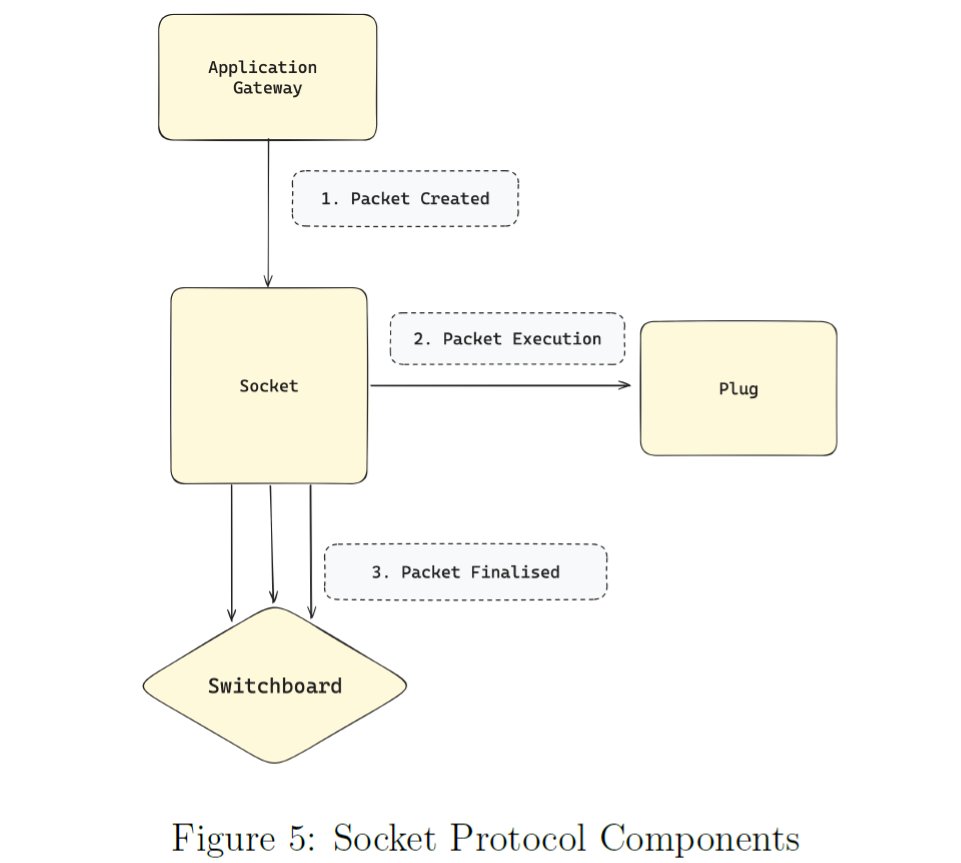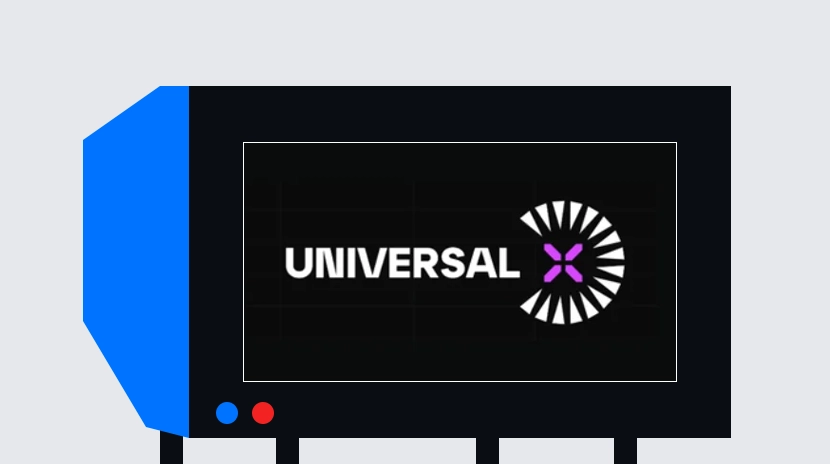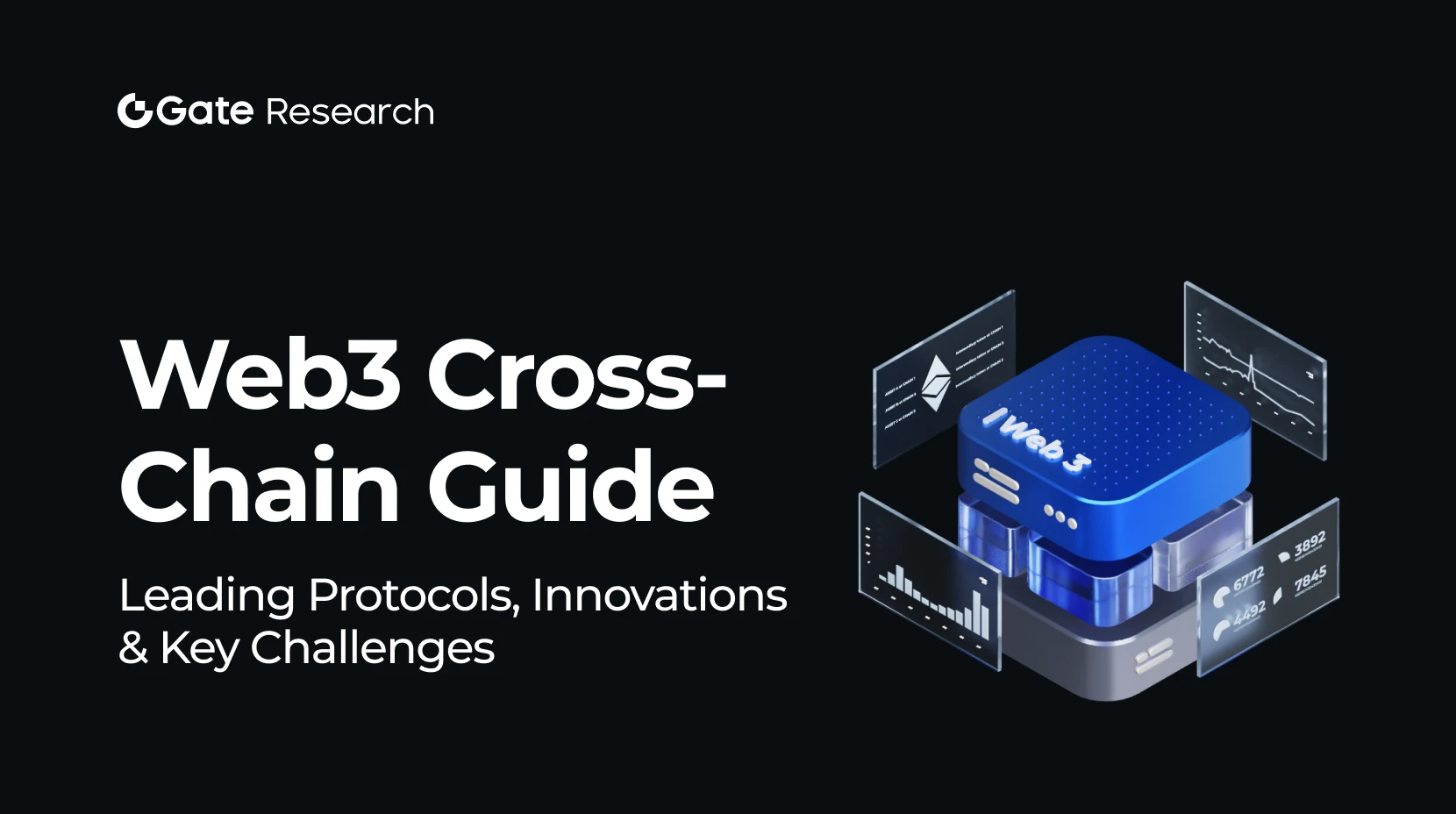Об'єднання екосистем блокчейну за допомогою протоколу Socket
Простір блокчейну був свідком появи численних ланцюжків, шарів, міжланцюжкового обміну повідомленнями і мостів. Ці інновації значно збільшили функціональність та можливості блокчейну, дозволяючи створити більш динамічну та універсальну екосистему. Однак фрагментація залишається великим викликом для користувачів, ліквідності та держав, розподілених по різних ланцюжках та шарах, що призводить до неефективності та складнощів. Користувачі зустрічають труднощі в навігації по різним екосистемам, тоді як ліквідність часто розсіяна, що зменшує загальну ефективність DApps.
Для вирішення цих викликів Socket Protocol розробив протокол абстрагування, щоб уніфікувати фрагментований ландшафт блокчейнів, забезпечуючи безшовне і ефективне рішення. Він забезпечує міжопераційність та зв'язаність між різними ланцюжками та рівнями, забезпечуючи єдиний та зручний для користувача досвід. Інтегруючи різноманітні екосистеми, Socket Protocol спрощує взаємодію та оптимізує ліквідність.
Що таке Протокол сокетів?

Джерело: веб-сайт протоколу сокетів
Протокол розетки є першим протоколом абстракції ланцюга, призначеним для того, щоб дозволити розробникам створювати програми, які безшовно взаємодіють понад 300 мережами блокчейну через абстракцію ланцюга. Замість того, щоб розглядати кожний ланцюг як незалежну систему, протокол розетки дозволяє розробникам використовувати ланцюги як єдину інфраструктуру — схоже до того, як традиційні програми використовують бази даних та сервери. Це забезпечує стандартизований спосіб для різних мереж блокчейну взаємодіяти та обмінювати активи без необхідності прямої інтеграції з технічними деталями кожної мережі. Абстрагуючи ці складнощі, розробники можуть створювати програми, які працюють плавно на кількох мережах блокчейну, усуваючи потребу обробляти унікальну реалізацію кожної мережі.
Візія та місія

Створений спільно Рішабом Хурана і Вайбхавом Челлані, протокол Socket має на меті уніфікувати розрізнений блокчейн-ландшафт, надаючи безшовне та ефективне рішення для взаємодії та зв'язку. Їхня місія полягає в створенні єдиної екосистеми, де різні блокчейни можуть спілкуватися та взаємодіяти легко, покращуючи загальний досвід користувача та оптимізуючи ліквідність у межах блокчейн-простору. Протокол Socket уявляє майбутнє, де децентралізовані додатки зможуть працювати на різних ланцюгах так само легко, як традиційні додатки взаємодіють з базами даних.
Основні функції протоколу Socket
- Договори, абстраговані від ланцюга: Розробники можуть виконувати договори на будь-якому підтримуваному ланцюгу з використанням стандартного Solidity, не звертаючи уваги на складні протоколи обміну повідомленнями або асинхронне керування. Це дозволяє прямі виклики функцій зі стійким досвідом розробника.
- Фреймворк передвиконання: Розробники можуть запускати користувацьку логіку перед виконанням на ланцюжку, що дозволяє розширені функції, такі як аукціони, відповідність намірам і перевірки безпеки. Цей фреймворк надає повний контроль над потоком виконання та досвідом користувача.
Продукти, що пропонує Socket Protocol
Socket API
API Socket надає розробникам стандартизований інтерфейс для спілкування з протоколом абстракції ланцюга. Він абстрагує складнощі мереж блокчейнів, дозволяючи розробникам ініціювати та керувати міжланцюжковими транзакціями за допомогою стандартних викликів Solidity. Це спрощує розробку програм, оскільки розробники не повинні опрацьовувати унікальні деталі впровадження кожної мережі.
Ключові переваги Socket API включають:
- Зручність інтеграції: Розробники можуть швидко інтегрувати API у свої додатки без значних модифікацій.
- Однаковий досвід розробника: API надає єдиний досвід взаємодії з різними блокчейнами, зменшуючи криву навчання розробників.
- Покращена функціональність: API підтримує розширені функції, такі як автоматизована маршрутизація, обмін активами та міжланцюжкові повідомлення.
Пристрій для розетки
Плагін Socket це інструмент, який інтегрується безпосередньо з додатками, побудованими на протоколі Socket. Він спрощує процес підключення до протоколу, дозволяючи розробникам включати функціональність міжланцюгової взаємодії, не керуючи складними мережевими деталями. Плагін зводить міст між логікою додатків та рівнем абстракції ланцюга.
Ключові функції плагіна Socket включають:
- Плавна Інтеграція: Плагін можна легко інтегрувати в існуючі додатки, що дозволяє здійснювати міжланцюжкові взаємодії з мінімальними зусиллями.
- Гнучкість: Розробники можуть налаштувати плагін під свої конкретні вимоги, забезпечуючи сумісність з різними варіантами використання.
- Спрощений розвиток: Плагін абстрагує складності взаємодії між ланцюжками, дозволяючи розробникам зосередитися на основній логіці додатка.
SocketScan

SocketScan - це інструмент моніторингу, який відображає міжланцюгову активність у екосистемі протоколу Socket. Він забезпечує реальний час інформації про потоки транзакцій та продуктивність абстрагованих від ланцюга пакетів через кілька мереж. SocketScan служить прозорою інформаційною панеллю для користувачів та розробників для відстеження та аналізу взаємодій протоколу.
Основні переваги SocketScan включають в себе:
- Моніторинг у реальному часі: Користувачі можуть переглядати живі оновлення щодо транзакцій між ланцюжками та статусів пакетів.
- Комплексна аналітика: SocketScan пропонує детальну аналітику та показники продуктивності, допомагаючи розробникам оптимізувати свої програми.
- Інтерфейс, зручний для користувачів: Інструмент має інтуїтивний інтерфейс, який полегшує користувачам навігацію та розуміння даних.
Протокол Bungee

Протокол Bungee - це глобальний ринок ліквідності на основі протоколу Socket. Він дозволяє користувачам виконувати різноманітні дії на різних ланцюжках, оптимізуючи їх для потреб користувачів. Користувачі можуть вказати свої бажані дії, такі як обмін, депозити в протоколи DeFi або випуск NFT, підписуючи запити користувачів. Протокол Bungee відповідає за складні частини, такі як виконання на ланцюжку, маршрутизація та пошук шляху через акторів поза ланцюжком.
Ключові особливості протоколу Bungee включають:
- Глобальний ринок ліквідності: сприяє переходу активів між ланцюжками та діями, оптимізуючи для потреб кінцевого користувача.
- Користувачі можуть диктувати свої бажані дії поза ланцюжком у безгазовому режимі.
- Віддана складність: протокол вирішує складне виконання onchain, маршрутизацію та пошук шляху, спрощуючи взаємодію користувача.
- Дизайн, спрямований на користувача: призначений для оптимізації досвіду користувача, що робить взаємодію між ланцюжками простою та ефективною.
Використання протоколу сокетів
Протокол Socket дозволяє потужні додатки за допомогою абстракції ланцюга та можливостей попереднього виконання. Ось деякі ключові використання, хоча цей список продовжує рости, оскільки розробники інноваційно використовують протокол:
Горизонтальне масштабування
Традиційне масштабування блокчейна зазвичай відбувається за двома вертикальними підходами: запуск додаткового ланцюжка або розгортання на високопропускних ланцюжках. Однак ці методи створюють виклики щодо композиції, ускладнюючи взаємодію застосунків та користувачів на інших ланцюжках або ролапах. Протокол Socket дозволяє інший підхід, який називається горизонтальним масштабуванням. Подібно до сучасних веб-застосунків, ваш застосунок може бути розгорнутий одночасно на кількох ланцюжках або ролапах, з балансуванням трафіку між ними. Використовуючи AppGateway від Socket, цей процес стає безшовним для контрактів у ланцюжку. Кілька провідних застосунків вже використовують цей підхід.
Виконання на основі наміру
Протокол Socket дозволяє розробникам будувати складні системи намірів, які покращують користувацький досвід та ефективність виконання. Через AppGateways розробники можуть обробляти користувацькі наміри, запускати виконавчі аукціони та оптимізувати маршрутизацію транзакцій. Вбудовані передавачі протоколу дозволяють безпосередньо впроваджувати системи на основі намірів, зберігаючи повний контроль над безпекою, витратами та продуктивністю.
Специфічна послідовність застосувань
Додатки, які генерують Miner Extractable Value (MEV), можуть скористатися власним послідовним розташуванням операцій. Замість того, щоб дозволити валідаторам ланцюжка захоплювати цю вартість, розробники можуть створювати AppGateways для послідовного розташування операцій, захоплення та переадресації вартості визначеним зацікавленим сторонам та реалізації власного порядку виконання. Одним з відомих прикладів є захоплення Oracle Extractable Value (OEV) з операцій обміну.
Попереднє забезпечення безпеки виконання
Відмінно від традиційних служб безпеки, які працюють після транзакції, протокол Socket дозволяє запобіжний захист за допомогою попередніх перевірок перед виконанням. За допомогою AppGateways розробники можуть впроваджувати перевірки безпеки перед виконанням onchain, забезпечувати виконання критичних інваріантів протоколу та проактивно запобігати потенційним зловживанням.
Технологія за протоколом сокету
Шлюз програм

Шлюзи додатків — це специфічні для програми функції верхнього рівня, які можуть виконувати попереднє ончейн-виконання самої програми. Протокол Socket не застосовує певну віртуальну машину або мову для цих контрактів шлюзу, але, припускаючи EVM для простоти, розробники можуть використовувати шлюз для різних випадків використання. Шлюзи розміщуються в офчейні організаціями-спостерігачами, які виконують інклюзивну роль. Програми можуть вибирати та наймати спостерігачів за допомогою ончейн-контрактів, які називаються комутаторами. Це налаштування забезпечує гнучкість для вибору кількох спостерігачів і прийняття рішення про те, як перевіряти виконання ними контрактів шлюзу. Варіанти використання контрактів шлюзу включають запуск симуляцій усіх взаємодій з їхніми ончейн-програмами для підвищення безпеки, проведення аукціонів для оптимізації кращих результатів для кінцевих користувачів і забезпечення глобальної маршрутизації.
Модулярні аукціони потоку замовлень (MOFA)

MOFA - це унікальна концепція, яку використовує Socket Protocol для створення ринку для потоку замовлень розробників, де сторонні учасники конкурують, щоб задовольнити потік замовлень. Це дозволяє розробникам додатків перетворити несумісного посередника в злагодженого друга, перетворюючи потенційну перешкоду в можливість абстракції ланцюга для додатка. Додатки тепер можуть оптимізувати властивості, які їм та їх користувачам дійсно важливі, такі як ціна, затримка або інші фактори. Сторонні учасники задовольняють запити користувачів onchain, як визначено додатками, сприяючи абстракції ланцюга, одночасно надаючи користь користувачам та додаткам.
Перемикачі

Перемикачі в основному є контрактами перевірки onchain, які може написати будь-хто та додати до протоколу Socket. Перед виконанням програми протокол Socket перевіряється з вибраним програмою перемикачем, що дозволяє програмам виконувати різні перевірки перед виконанням їх onchain контрактів. Подумайте про перемикачі як про бібліотеки, якими може скористатися будь-хто. Приклади включають перемикач, який дозволяє виконання плагіну, якщо тільки один спостерігач авторизує виконання, перемикач, який використовує 100 спостерігачів та дозволяє виконання, якщо 2/3 авторизують його, або оптимістичні, ZK або оракульні перемикачі, які доводять, що спостерігач виконав встановлену програмою шлюз, як задумано. Програми будуть вибирати різні перемикачі відповідно до свого використання з різними рівнями вартості, безпеки та затримки для виконання onchain. Програми можуть перемикати перемикачі за потреби.
Спостерігачі

Спостерігачі - це сутності, які запускають службу спостерігача, яка читає кілька ланцюгів та дозволяє розробникам програм розгортати контракти шлюзів на верхній частині віртуальних машин, які вони запускають. Застосунки використовують спостерігачів через комутаційні дошки, що робить їх важливою частиною системи. Ключові моменти про спостерігачів включають:
- Залежно від програм розробника комутації, вони будуть мати різний рівень довіри до цього суб'єкта.
- Будь-хто може запустити службу-спостерігача та слухати стільки або стільки ланцюгів, скільки вони хочуть брати участь у протоколі Socket.
- Участь підлягає заявкам, які обирають розгортання своїх контрактів шлюзу на сервісі глядача.
Архітектура протоколу сокетів

Протокол сокетів дозволяє розробникам створювати додатки з абстракцією ланцюга, використовуючи комбінацію агентів позачергового та участи контрактів. Ця налаштування дозволяє гнучкі, ефективні та налаштовані взаємодії між ланцюгами.
Спостерігачі
Спостерігачі - це оператори офланцевого середовища, які відстежують активність блокчейну та господарюють шлюз додатків (AppGateway). Вони виконують власну офланцеву логіку, визначену розробниками, та генерують докази, які потім передають Передавачу для перевірки наланцюжка Світлодіодний комутатор. Спостерігачі виступають мостом між користувачем та блокчейном, дозволяючи розробникам вставляти корисну офланцеву логіку перед виконанням наланцюжкових смарт-контрактів. Це спрощує процеси, такі як високі комісії за газ, складні мости, та взаємодії багатьох ланцюгів.
Ключова роль спостерігачів
- Хости AppGateways: Спеціалізовані віртуальні машини виконують контракти AppGateway, виконують власну логіку позачергово.
- Генерувати докази: Спостерігайте за подіями блокчейну, виконуйте логіку та генеруйте докази для перевірки на ланцюжку за допомогою Switchboards.
- Пасивна роль: Будь-хто може стати Спостерігачем, запустивши вузол без спеціальних дозволів.
Як Спостерігачі Вписуються в Протокол
- Користувач підписує поза ланцюжком повідомлення та надсилає його Спостерігачу, де виконується логіка AppGateway.
- Спостерігач генерує доказ, який передається Передавачу.
- Transmitter подає доказ ончейн, де його перевіряє Switchboard перед тим, як викликати ончейн смарт-контракт.
Перемикачі
Switchboards - це ончейн смарт-контракти, які підтверджують офчейн-докази, згенеровані Спостерігачами та надані Передавачами. Вони забезпечують, що офчейн-логіка, виконана в AppGateway, відповідає вимогам безпеки, вартості та продуктивності додатка.
Основні функції перемикачів
- Дозвіл на реєстрацію: Будь-хто може написати та зареєструвати комутатор за протоколом SOCKET.
- Легкий інтерфейс: розроблений для простоти та ефективності, комутатори приймають докази від передавачів та повертають булеве значення (true/false), що вказує на правильність доказу.
- Визначено застосування: Розробники можуть вибрати або створити комутаційні панелі, щоб відповідати їх потребам у безпеці, вартості та затримці.
- Проводники, незалежні від доказів: Switchboards приймають різноманітні типи доказів, такі як докази оракулів, zk-докази, докази багато-підписів або оптимістичні подання.
Як комутаційні дошки вписуються в протокол
- Трансмітер подає підписаний запит користувача та доказ, згенерований Спостерігачем, до контракту SOCKET onchain.
- Контракт SOCKET пересилає доказ на комутатор, вибраний розробником додатка.
- Перемикач перевіряє доказ і повертає булеве значення (true/false).
- Якщо доказ прийнято, виконується у розумний контракт onchain.
Передавачі
Трансмітери - це позаланцюжкові розумні агенти, відповідальні за переміщення запитів користувачів та доказів, згенерованих Спостерігачем, з позаланцюжкової до ланцюжкової системи. Вони координуються зі Спостерігачами для подання даних до контракту SOCKET на ланцюжку, який потім пересилає дані до комутаційної дошки для верифікації.
Ключова роль передавачів
- Переміщуйте дані Onchain: Надсилайте докази, створені Спостерігачами, на контракт SOCKET onchain для перевірки.
- Співпрацюйте з Спостерігачами: Переконайтеся, що відповідний доказ та запит користувача подано до блокчейну для виконання.
- Запуск контрактів Onchain: Сприяти виконанню смарт-контракту додатка onchain, як тільки доказ буде перевірено Switchboard.
Як передавачі вписуються в протокол
- Користувач надсилає запит до Спостерігача, де виконується логіка AppGateway, і генерується доказ.
- Спостерігач передає доказ передавачу.
- Transmitter подає доказ та запит користувача на контракт SOCKET onchain.
- Перемикач перевіряє доказ і повертає булеве значення (true/false).
- Якщо прийнято, спрацьовує розумний контракт onchain.
Onchain Додаток Контракт
Контракти додатків Onchain - це традиційні розумні контракти, розгорнуті на блокчейні, що взаємодіють безпосередньо з екосистемою SOCKET. Ці контракти уособлюють основну логіку та функціональність децентралізованих додатків (dApps). Інтегруючись з протоколом SOCKET, контракти додатків Onchain можуть використовувати міжланцюгову взаємодію та абстрагувати складність від розробників.
Ключові ролі контрактів Onchain App
- Виконання: вони виконують заздалегідь визначені функції та бізнес-логіку на основі взаємодії користувача та результатів офлайн-процесів.
- Взаємодія: Вони взаємодіють безперешкодно з кількома мережами блокчейну, що дозволяє передавати активи та дані між ланцюжками без прямої інтеграції технічних деталей кожної мережі.
- Безпека та децентралізація: Розгорнуті наланцюжку, вони успадковують властивості безпеки та переваги децентралізації базового блокчейну.
Договір App-Gateway
Договори App-Gateway є спеціалізованими договорами, розгорнутими на покращених віртуальних машинах (EVMx), і виступають посередниками між користувачами та смарт-договорами onchain. Ці договори керують взаємодією та забезпечують виконання певної логіки перед виконанням операцій onchain.
Ключові ролі контрактів App-Gateway
- Передвиконавчі перевірки: вони запускають власну логіку перед виконанням onchain, таку як симуляції, аукціони, відповідність намірам та перевірки безпеки.
- Проміжний Шар: Вони виступають як міст, управляючи взаємодією між користувачами та контрактами додатків на ланцюжку, забезпечуючи плавну та ефективну комунікацію.
- Розширені можливості: вони дозволяють використовувати розширені функції, такі як глобальна маршрутизація та композиція, що покращують загальний досвід користувача.
Як працює протокол сокетів

Протокол Socket працює шляхом створення та розгортання Ланцюжково-Абстрактованих-Пакетів (CAPs), щоб дозволити програмам взаємодіяти безперешкодно на різних ланцюжках. Цей процес забезпечує ефективні та безпечні транзакції між ланцюжками.
- Ініціація запиту користувача: Користувач відправляє запит до Шлюзу додатків.
- Обробка шлюзу: Шлюз, який діє як точка підключення для ончейн-застосунків, розміщених операторами служби моніторингу оффчейн, отримує запит користувача. Шлюз обробляє запит та підготовлює його для наступного кроку.
- Роль передавачів: Передавачі, позаланцюгові розумні актори, відповідальні за переміщення запитів користувачів та доказів з позаланцюгового на ланцюжковий, отримують оброблений запит. Вони реагують пропозиціями дій на ланцюжках.
- Вибір підходящого передавача: Шлюз програми вибирає найбільш підходящий передавач на основі конкретних умов, таких як вартість, затримка та безпека.
- Створення Ланцюжково-Абстрагованих-Пакетів (CAPs): Обраний Передавач створює CAP, який містить інформацію про запит та відповідь разом із підписом аутентифікації від Спостерігача.
- Виконання від трансмітерів: Трансмітер виконує CAP на відповідних мережах блокчейну. Смарт-контракт додатку (Плагін) виконує необхідні дії.
- Перевірка за допомогою комутаторів: Комутатори, які є onchain смарт-контрактами, перевіряють CAP, щоб забезпечити його валідність та безпеку. Комутатори дозволяють програмам обирати з різних служб моніторингу та аутентифікації, таких як Оптимістичні або Rollups з нульовим знанням.
- Завершення та Прозорість: Цей процес продовжується по різних мережах, поки всі дії в CAP не будуть завершені. Компоненти, такі як Спостерігачі та Передавачі, забезпечують прозорість та ефективність виконання, роблячи протокол Socket потужним та гнучким рішенням для багатоланцюжкових додатків.
Подорож збору коштів Socket Protocol
Протокол Socket зробив значні кроки в забезпеченні фінансування для підтримки своєї місії покращення міжблокчейн інтероперабельності. У березні 2022 року Socket Protocol забезпечив раунд фінансування розміром $5 мільйонів. Цей раунд фінансування привернув кількох ключових інвесторів, зокрема Coinbase Ventures і Framework Ventures. Інвестиції спрямовані на розширення співпраці Socket з Coinbase, надаючи можливості мостінгу для розробників та користувачів Coinbase Wallet та Base.
Останній в Meilenstein збору коштів відбувся в вересні 2023 року, коли Socket Protocol зібрав ще 5 мільйонів доларів у стратегічному раунді. Цей раунд також очолили Coinbase Ventures та Framework Ventures, що ще більше закріпило їх підтримку проекту. Новий капітал підвищить можливості протоколу та розширить його вплив в екосистемі блокчейн.
Висновок
Socket Protocol вирішує проблеми фрагментації в екосистемі блокчейну, забезпечуючи безперебійну взаємодію в кількох блокчейн-мережах. Використовуючи абстракцію ланцюга, він дозволяє розробникам створювати складні крос-чейн програми. Протокол Socket забезпечує ефективні, безпечні та масштабовані крос-чейн транзакції за допомогою інноваційних технологій, таких як шлюзи додатків, модульні аукціони потоку замовлень, комутатори та спостерігачі. Його набір продуктів, включаючи Socket API, Socket Plugin, SocketScan і Bungee Protocol, розширює можливості як розробників, так і користувачів. За підтримки успішного збору коштів та відомих інвесторів, Socket Protocol готовий спростити міжланцюгову взаємодію та створити справді взаємопов'язану екосистему.
Пов’язані статті

Eволюція абстракції ланцюга та у торгівлі у блокчейні

UniversalX – нова парадигма торгівлі мемами монетами через абстракцію ланцюга та міжланцюжкове підключення

Глибока аналіз абстрактних застосувань: Найбільш відчутний шлях для звичайних користувачів у DeFAI

Gate Research: Комплексний огляд служб міжланцюжкового веб3 - Ведучі протоколи, інновації та виклики

Розкриття потужності токена GRIFFAIN: фінансовий AI-агент Solana Labs
